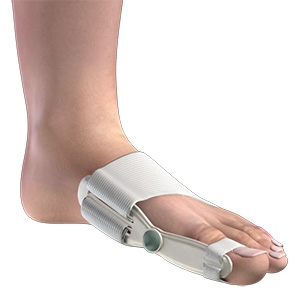What is it?
This is a surgical technique where the operation is performed through very small incisions, only a few millimetres long. This is in contrast to traditional surgery performed through large cuts on the foot.
Why should I choose it over conventional surgery?
Minimally Invasive Bunion & Foot Surgery has perceived advantages over open surgery, as smaller incisions are made. Much less soft tissue stripping is required to gain access to the bone in order to make the bony corrections. This may lead to:
- Reduced surgical time
- Less damage to tissues
- Less internal scarring
- Minimal external scarring (no stitches needed)
- Less joint stiffness
- Day case surgery
- Quicker recovery time
- Faster return to work and normal activities
- Possibly a better result
What conditions can be treated this way?
This technique is particularly useful in bunion surgery, where very small scars and better joint movement can be achieved. Big toe arthritis and toe deformities can also be successfully treated using these techniques.
The wide variety of foot conditions which can be treated include:
- Bunions (hallux valgus)
- Hammer toes
- Metatarsalgia (pain under the balls of the toes)
- Big toe arthritis (Cheilectomy for Hallux Rigidus)
- Some aspects of flat feet surgery
- Some aspects of ankle arthritis surgery
How is minimally invasive foot surgery performed?
The foot is numbed using an ankle block like traditional surgery and you can be awake or asleep, depending on your preference. Several 3 mm incisions are placed around the foot to allow access for the specialist instruments. An x-ray machine is integral to the operation to ensure the instruments are directed accurately, ensuring precise bony cuts and therefore an excellent correction.
Can any surgeon perform this kind of surgery?
No. Very specific training in minimally invasive techniques are required and these training courses have restricted access. A new range of surgical tools, not normally used in traditional open surgery are used and these require a new set of technical skills in order to master the different surgical techniques. This requires training and experience. Not all foot and ankle surgeons perform minimally invasive foot surgery.

